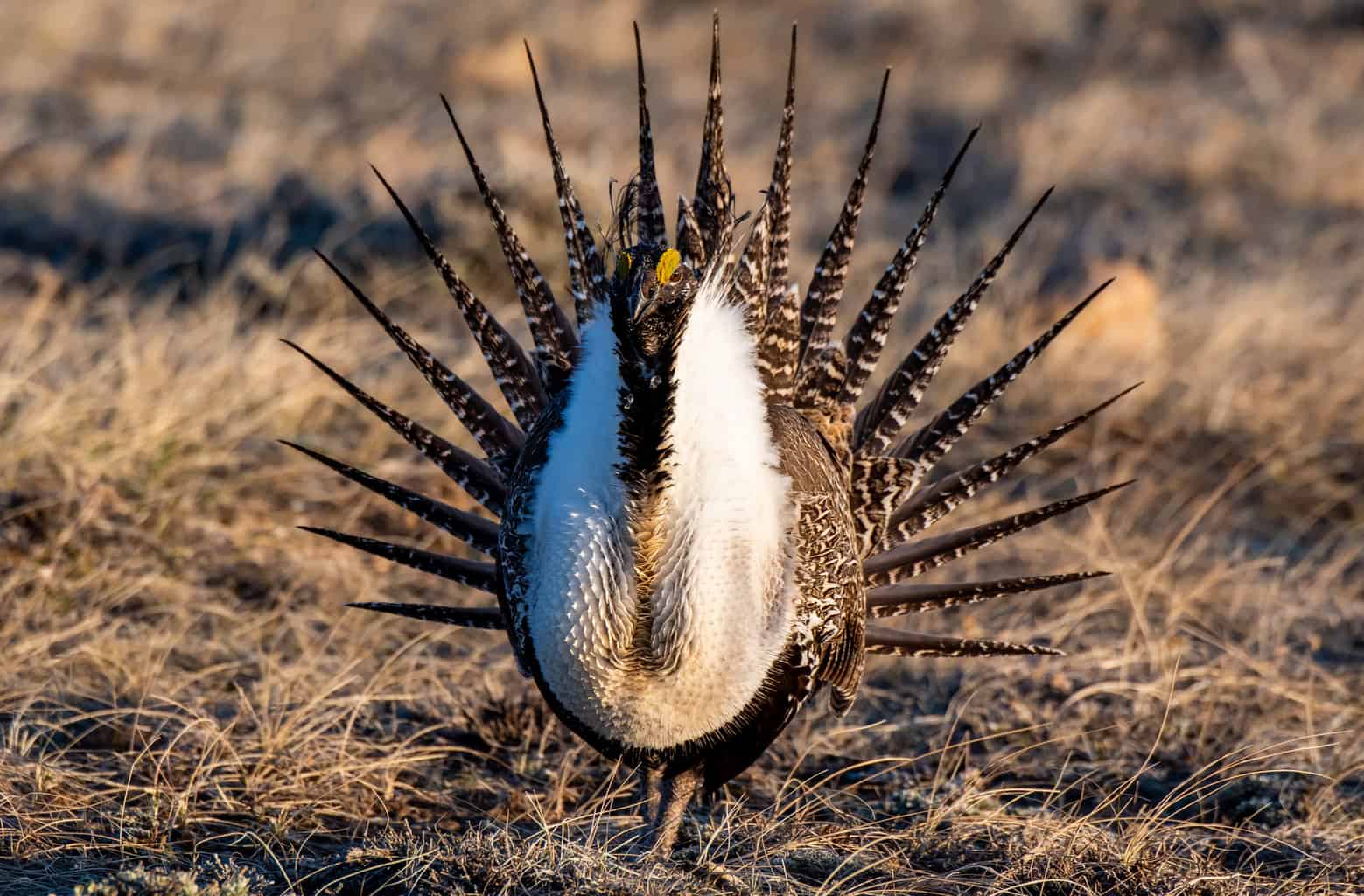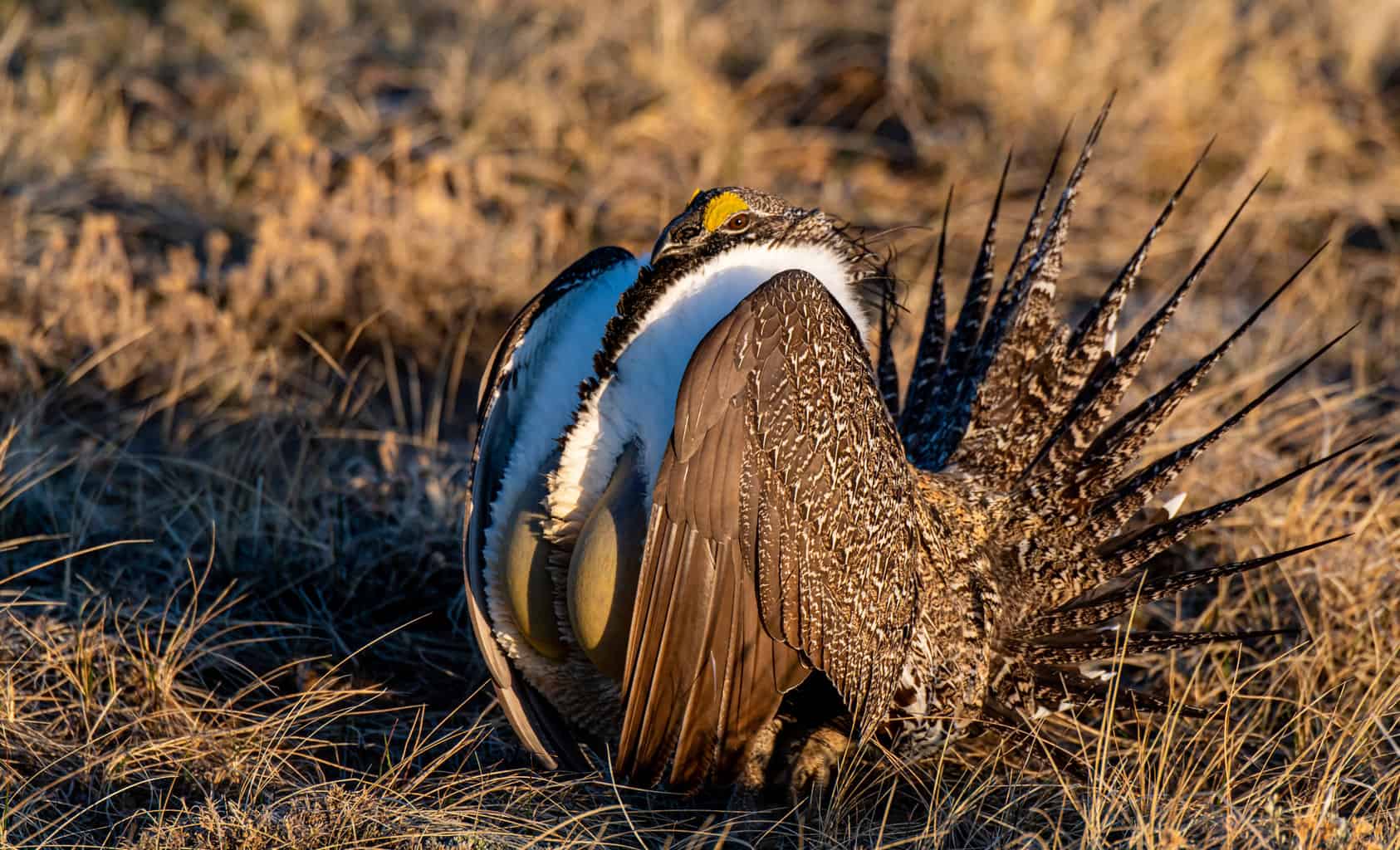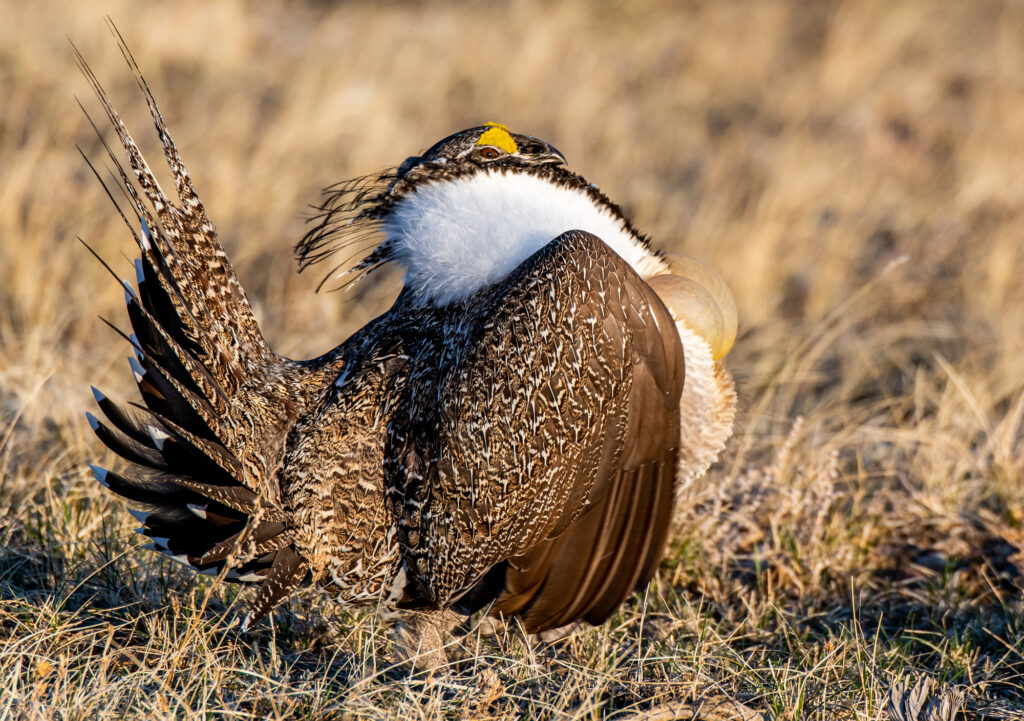Meet the Greater Sage-Grouse!
This fascinating, eye-catching bird lives in the sagebrush of the western United States, as well as Southern Alberta and Saskatchewan. You can find them consistently in the following US states: California, Colorado, Idaho, Nevada, Oregon, Montana, Utah, and Wyoming.
They only travel about 20 miles between their summer breeding grounds and their winter habitat. Regardless of the time of year, they need to live near sagebrush for their habitat and diet. You will not track down the Greater Sage-Grouse in any area where there aren’t plenty of sagebrushes.
They weigh about 4 pounds, which is the size of most backyard hens.
What Makes the Greater Sage-Grouse So Interesting?

It’s hard to say the most interesting thing about the Greater Sage-Grouse. Is it the bird’s large fan of a tail? Its ruff of feathers around the neck? The dance that the males do to attract a mate?
For most people, the most fascinating thing about the Greater Sage-Grouse is the twin air sacs on its chest that it can inflate and deflate rapidly while dancing, in order to create a loud POP noise.
Show the Greater Sage-Grouse’s mating dance to any middle schooler (or anyone with the humor of one), and you’re sure to get a giggle!
The Sage-Grouse’s dance is accompanied by a low series of coos, followed by those two pops made by the air sacs. You can listen to these interesting sounds here.
“Lekking” for a Mate:
“Lekking” is a behavior in which males of a species will gather together in one area to show off to potential female mates. Females make their way to the lekking ground, where they observe the males and choose a mate.
Although Sage-Grouse are not the only animals or birds that participate in lekking, they are certainly the most famous examples of it! Some other creatures that engage in this behavior are some frogs, bats, iguanas, ants, wasps, and bees.
After choosing her preferred mate, the female Sage-Grouse will crouch in front of him, inviting him to mate with her by spreading her wings.
It’s a bit unpredictable for the males; some will end up mating with multiple females, whereas others will not get the option to reproduce at all.
The Greater Sage-Grouse Diet & Habitat:
Its diet is made up primarily of the green leaves of plants, but it will also eat flowers and insects. Sometimes they will eat seeds, although this makes up much less of their diet. Young Sage-Grouse depend on insects like ants, beetles, and grasshoppers.
The Greater Sage-Grouse doesn’t have a very long lifespan. Although some wild birds have been documented at up to 10 years of age, the majority of these birds only live to be about a year and a half. One of the biggest threats to these birds are the predators in their ecosystem.
They are accustomed and adapted to predation from other long-term sagebrush inhabitants, such as coyotes, birds of prey (eagles, hawks, and other raptors), badgers, etc.
They have a harder time avoiding what are called “novel” predators–animals that have recently started entering the sagebrush areas and consuming these birds. Novel predators include skunks, foxes, and ravens.
Another threat to Sage-Grouse is human development. Sage Grouse need to be able to travel between winter and summer habitats easily–interruptions in their habitat make this much harder for them!
Nesting Facts About the Greater Sage-Grouse

Although male Sage-Grouse often get all the attention because of their mating dance, the female does all the work of nesting, incubating, and then raising their young. Males don’t contribute anything at all to this process!
Females build a protected nest underneath sagebrushes, tufts of grass, or other shrubs. However, they aren’t completely concealed, as they may need to escape quickly in case a predator shows up. They usually leave two sides of the nest open for escape.
The nest is shaped like a bowl and made from twigs, leaves, grass, and even feathers that she plucks from her own breast. She lays 4-11 eggs, which are just a bit smaller than a typical chicken egg. The eggs incubate for 25-29 days before hatching.
Baby Sage-Grouse are quite self-sufficient. They can’t fly well until they are about 5 weeks old, but they can feed themselves and camouflage themselves well in the grasses of their nesting ground.
The Greater Sage-Grouse Is in Some Trouble
The Greater Sage-Grouse has been experiencing a significant population decline. There are estimates that there may have been as many as 16 million Sage Grouse before European colonization of the American West; there are now only about 200,000 of these birds.
They are declining by about 3.5% per year, and they score a 15/20 on the Continental Concern Score. They are considered at a higher risk of extinction than most other types of birds in North America.
The only way to protect them is to take significant conservation action to preserve their habitat.

